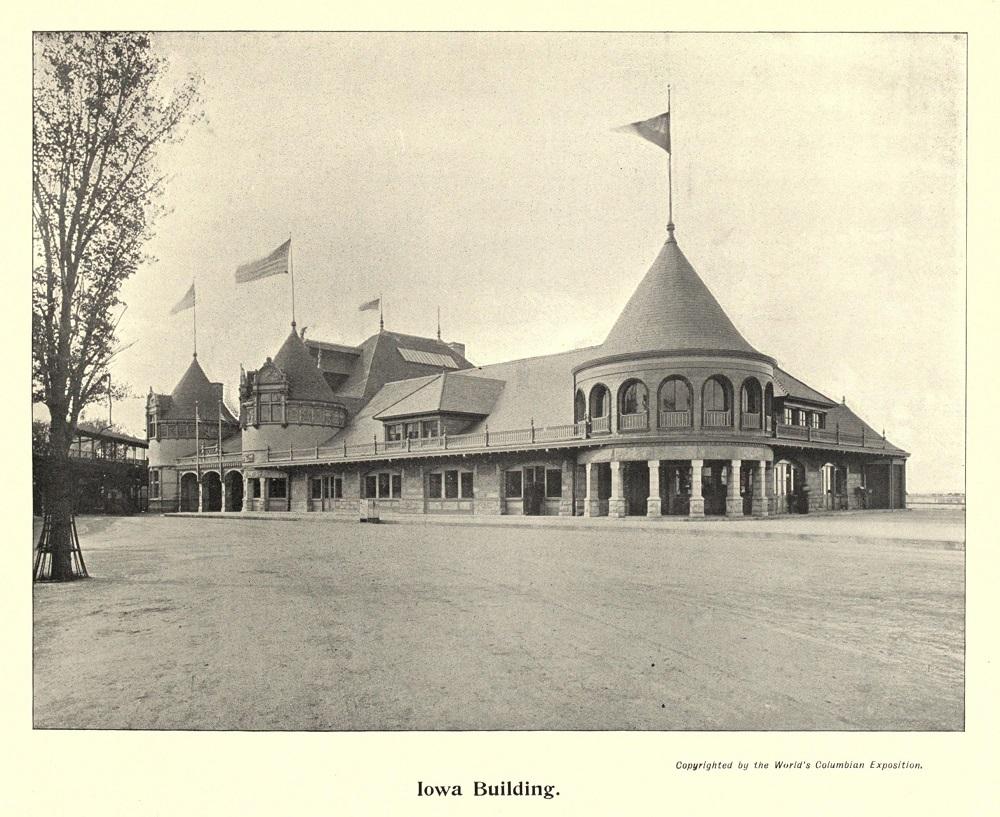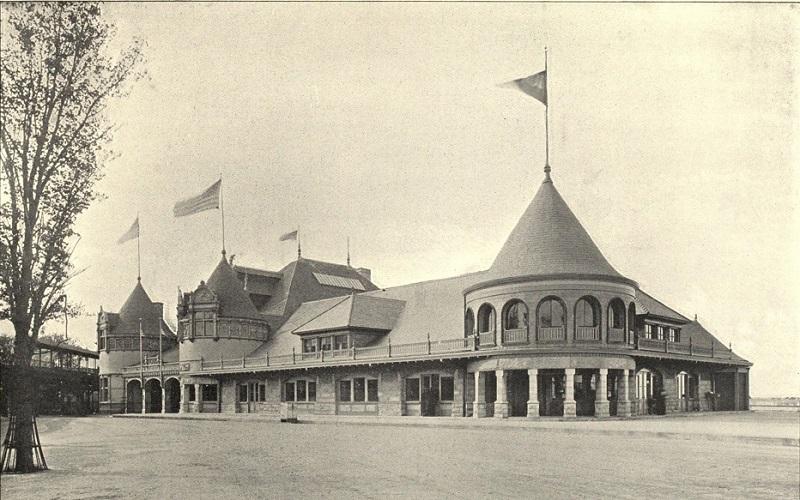The Farm House Museum at Iowa State University in Ames is hosting an exhibition on “World’s Fairs, Expositions, & Centennial Celebrations of the Victorian Era” from February through October, 2024. This exhibition illustrates through objects and narrative the earliest World’s Fair in 1851 London, through several in Paris, and the Centennial and World’s Columbian Exhibitions in the United States.
The University Museums’ permanent collection includes several objects that were souvenirs of some of the fifteen major World’s Fairs or Expositions held between 1851 and 1910. Souvenirs ranged from booklets, paper fans, buttons, and ribbons, to commemorative glassware and ceramics produced on-site. The selected objects in this exhibition help tell the story of the evolution of these major influential events—the good and the bad, the artistic and the functional.
The exhibition can be viewed at Farm House Museum (601 Farm House Lane in Ames).

The Iowa State Building at the 1893 World’s Columbian Exposition in Chicago. [Image from Shepp, James W.; Shepp, Daniel B. Shepp’s World’s Fair Photographed. Globe Bible Publishing, 1893.]
Fantastical Dreamscapes: Architectural Wonders and Innovations at World Expos, 1851 to 1911 with Lisa D. Schrenk, Professor of Architectural History, University of Arizona
Tuesday, February 27, 5:00–6:00 p.m. Virtual on Zoom (link)
Zoom around the globe with University of Arizona Professor of Architectural History Lisa D. Schrenk to explore the architectural designs and building innovations that shaped the first 60 years of international expositions, including advances in iron, glass, electricity, and aesthetics, that made possible the magnificent pavilions that covered the fairgrounds at these grand events.
This lecture is co-sponsored by The Institute for the Study of International Expositions (ISIE) of which Schrenk is co-founder.
The Enthronement of Merchandise with the Aura of Amusement with Ethan Robey, World’s Fairs Scholar, University of California, Irvine
Sunday, April 14, 2:00–3:00 p.m. Virtual on Zoom (link)
World’s fairs scholar Ethan Robey, University of California, Irvine, will discuss the grandiose displays of manufacturers at late 19th- and early 20th-century world’s fairs, and the way these events precipitated into American homes in material form, as souvenirs and commercial goods, and in social form, as object lessons in taste and what it meant to be a consumer in a modernizing world.
The Iowa State Band performed at the 1893 World’s Fair throughout the summer. [Image from Pictorial Album and History of the World’s Fair and Midway. Harry T. Smith & Co., 1893.]

